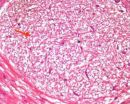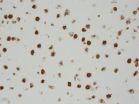(Press-News.org) (Toronto) March 31, 2014 – Researchers at the Centre for Addiction and Mental Health have discovered two new genes linked to intellectual disability, according to two research studies published concurrently this month in the journals Human Genetics and Human Molecular Genetics.
"Both studies give clues to the different pathways involved in normal neurodevelopment," says CAMH Senior Scientist Dr. John Vincent, who heads the MiND (Molecular Neuropsychiatry and Development) Laboratory in the Campbell Family Mental Health Research Institute at CAMH. "We are building up a body of knowledge that is informing us which kinds of genes are important to, and involved in, intellectual disabilities."
In the first study, Dr. Vincent and his team used microarray genotyping to map the genes of a large Pakistani family which had intermarriage. Five members of the youngest generation were affected with mild to moderate intellectual disability. Dr. Vincent identified a truncation in the FBXO31 gene, which plays a role in the way that proteins are processed during development of neurons, particularly in the cerebellar cortex.
In the second study, using the same techniques, Dr. Vincent and his team analyzed the genes of two families with intermarriage, one Austrian and one Pakistani, and identified a disruption in the METTL23 gene linked to mild recessive intellectual disability. The METTL23 gene is involved in methylation—a process important to brain development and function.
About one per cent of children worldwide are affected by non-syndromic (i.e., the absence of any other clinical features) intellectual disability, a condition characterized by an impaired capacity to learn and process new or complex information, leading to decreased cognitive functioning and social adjustment. Although trauma, infection and external damage to the unborn fetus can lead to an intellectual disability, genetic defects are a principal cause.
These studies were part of an ongoing study of affected families in Pakistan, where the cultural tradition of large families and consanguineous (inter-) marriages among first cousins increases the likelihood of inherited intellectual disability in offspring.
"Although it is easier to find and track genes in consanguineous families, these genes are certainly not limited to them," Dr. Vincent points out. A recent study estimated that 13 per cent of intellectual disability cases among individuals of European descent are caused when an individual inherits two recessive genes, meaning that results of this study are very relevant to populations such as Canada.
This type of autosomal recessive gene mutation haas traditionally been more difficult to trace, resulting in a paucity of research in this area. Parents of affected children show no symptoms, and the child must inherit one defective copy of the gene from each parent, so that only one in four offspring are likely to be affected. Smaller families, therefore, show a decreased frequency and are less amenable to this kind of study.
Dr. Vincent is currently engaged in a study that will screen Canadian populations of autism and intellectual disability for autosomal recessive gene mutations. Results will be available later this year.
A total of 42 genes linked to non-syndromic recessive forms of intellectual disability have now been identified; estimates suggest that up to 2,500 genes might be linked with intellectual disability, the majority being recessive.
INFORMATION:
This research was supported by grants by the Canadian Institutes of Health Research, the Pakistan Higher Education Commission, and the Austrian Science Fund.
Media contact: Kate Richards
CAMH Media Relations
416-595-6015
or by email atmedia@camh.ca
The Centre for Addiction and Mental Health (CAMH) is Canada's largest mental health and addiction teaching hospital, and one of the world's leading research centres in its field. CAMH combines clinical care, research, education, policy development and health promotion to help transform the lives of people affected by mental health and addiction issues. CAMH is fully affiliated with the University of Toronto, and is a Pan American Health Organization/World Health Organization Collaborating Centre. For more information, please visit http://www.camh.ca.
CAMH researcher discovers 2 new genes linked to intellectual disability
2014-03-31
ELSE PRESS RELEASES FROM THIS DATE:
NTS's role in the protection of pre-moxibustion on gastric mucosal lesions
2014-03-31
Moxibustion may have protective effects on the stomach mucous membrane against stress gastric ulcer. The potential mechanism of moxibustion may be mediated by transforming growth factor-α, gastric mucosa cell proliferation, inhibition of apoptosis, and the expression of heat shock protein-70. Previous studies have shown that somatic sensation by acupuncture and visceral nociceptive stimulation can converge in the nucleus tractus solitarii (NTS) where neurons integrate signals impacting on the function of organs. To explore the role of the NTS in the protective mechanism ...
New study finds biochar stimulates more plant growth but less plant defense
2014-03-31
In the first study of its kind, research undertaken at the University of Southampton has cast significant doubt over the use of biochar to alleviate climate change.
Biochar is produced when wood is combusted at high temperatures to make bio-oil and has been proposed as a method of geoengineering. When buried in the soil, this carbon rich substance could potentially lock-up carbon and reduced greenhouse gas emissions. The global potential of biochar is considered to be large, with up to 12 percent of emissions reduced by biochar soil application.
Many previous reports ...
Major breakthrough in stem cell manufacturing technology
2014-03-31
Scientists at The University of Nottingham have developed a new substance which could simplify the manufacture of cell therapy in the pioneering world of regenerative medicine.
Cell therapy is an exciting and rapidly developing area of medicine in which stem cells have the potential to repair human tissue and maintain organ function in chronic disease and age-related illnesses. But a major problem with translating current successful research into actual products and treatments is how to mass-produce such a complex living material.
There are two distinct phases in the ...
Wen Dan Tang improves insomnia-related anxiety
2014-03-31
Ghrelin, a brain-gut peptide that induces anxiety and other abnormal emotions, contributes to the effects of insomnia on emotional behavior. In contrast, the traditional Chinese Medicine remedy Wen Dan Tang reduces insomnia-related anxiety, which may perhaps correspond to changes in the brain-gut axis. This suggests a possible relationship between Wen Dan Tang's pharmacological mechanism and the brain-gut axis. Based on this hypothesis, a research team from Beijing University of Chinese Medicine in China generated a sleep deprivation rat model, and orally administered Wen ...
A breakthrough in creating invisibility cloaks, stealth technology
2014-03-31
Controlling and bending light around an object so it appears invisible to the naked eye is the theory behind fictional invisibility cloaks.
It may seem easy in Hollywood movies, but is hard to create in real life because no material in nature has the properties necessary to bend light in such a way. Scientists have managed to create artificial nanostructures that can do the job, called metamaterials. But the challenge has been making enough of the material to turn science fiction into a practical reality.
The work of Debashis Chanda at the University of Central Florida, ...
Early rehabilitation improves postsurgery neurofunctional outcome in spinal tumor children
2014-03-31
In children, primary spinal tumors comprise 4% of all tumors from the central nervous system. Spinal tumors can present with a variety of clinical signs and symptoms in children such as pain followed by motor regression, gait disturbance, sphincter dysfunction, sensory symptoms, torticollis, and kyphoscoliosis. Treatment of spinal tumors is based on tumor type, but surgical resection is the mainstay. Moreover, physical treatment and rehabilitation implementation are necessary in order to minimize the symptoms of the patients and develop present functions. Prof. Nezire Kose ...
A new study shows that even micro heart attacks are a major problem
2014-03-31
MINNEAPOLIS, MN – March 29, 2014 – Researchers at the Minneapolis Heart Institute at Abbott Northwestern Hospital have found that cardiac magnetic resonance (CMR) imaging may help doctors better identify which patients with mild heart disease are likely to develop more serious heart problems long term. CMR imaging provides supporting information to guide treatment decisions and help doctors provide targeted care for patients at highest risk. The research, led by Minneapolis Heart Institute Foundation Research Fellow Naohiko Nemoto, MD, will be presented at the American ...
Young women: Eat more fruits and vegetables now to protect your heart later
2014-03-31
MINNEAPOLIS, MN – March 29, 2014 – A diet rich in fruits and vegetables for middle-aged adults has been associated with reduced rates of coronary heart disease (CHD), especially in women. Now, research supported by the Minneapolis Heart Institute Foundation (MHIF) shows that for women, what you eat in your 20s may be just as important for your middle-aged heart. The results of the study, aimed at examining the extent to which young adults' diets are linked to cardiovascular health later in life, will be presented at the American College of Cardiology (ACC) meeting in Washington, ...
Fewer deaths with self-expanding TAVR versus surgery at 1 year
2014-03-31
WASHINGTON (March 29, 2014) — Transcatheter aortic valve replacement with a self-expanding valve prosthesis for the first time has demonstrated significantly lower death rates at one year compared with conventional surgical valve replacement in high-risk patients with severe aortic stenosis, according to research presented at the American College of Cardiology's 63rd Annual Scientific Session.
Worldwide, an estimated 300,000 people have severe aortic stenosis – a faulty valve in the main artery carrying blood out of the heart – and roughly a third of them are deemed unable ...
Renal denervation shows no benefit in resistant hypertension
2014-03-31
WASHINGTON (March 29, 2014) — Renal denervation fell short of primary and secondary efficacy goals in patients with severe resistant hypertension but did meet the primary safety endpoints, according to keenly awaited data from SYMPLICITY HTN-3 presented at the American College of Cardiology's 63rd Annual Scientific Session. This pivotal trial is the largest study conducted of renal artery denervation as a treatment for resistant hypertension and the most rigorously designed, including blinding and a sham treatment in the control arm.
Hypertension increases risks for heart ...



